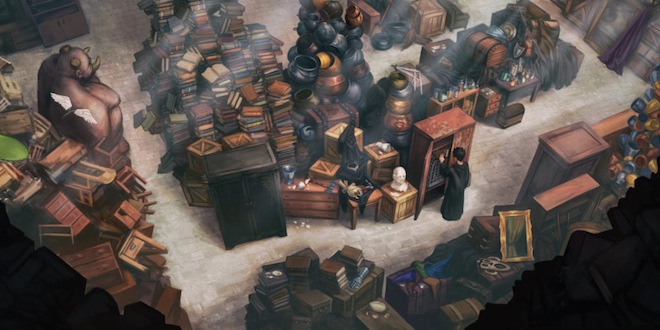Wizard Wellness: Therapeutic Magic
Readers have long noted that the wizarding world in general, and Hogwarts in particular, is full of danger, but the school does not appear to provide much in the way of mental health services. Considering the frequent threats of monsters loose in the castle, Dark wizards at large, and soul-sucking Dementors roaming the grounds, students could really use some therapy. Wizards may not have the same approaches to psychology as Muggles, but magic offers unique alternatives that could be beneficial in therapeutic settings.
Note: This article was not written by mental health professionals and does not constitute medical advice. Reader discretion is advised. If you or someone you know is struggling, please seek help or call the National Alliance on Mental Illness Helpline at 1-800-950-NAMI.
Boggart

Professor Lupin teaches students to banish boggarts, giving them the opportunity to be exposed to their fears and work through them in a safe and controlled environment. They learn not just how to perform the charm but also how to laugh in the face of fear and turn their fears into something funny. Harry learns both how to face the image of a Dementor and how to confront a real Dementor by practicing the Patronus Charm on a boggart.
Lupin’s lessons may be the closest thing to therapy that we see in the series. For wizards dealing with phobias, a boggart could provide a chance for exposure to their fears and give them a sense of power over them, as well as practical tools for defending themselves against any real dangers they might pose.
Patronus

While Harry uses a boggart to learn the Patronus Charm, anyone can learn to tap into their inner joy by casting the charm. Dumbledore’s Army learns it without a boggart, and though Harry admits that it would be easier in a frightening situation, just taking the time to think about something happy can be a mood booster. Of course, it’s not so simple to just banish dark thoughts with brighter ones, but the Patronus Charm serves as a physical manifestation of one’s success in doing so. Using this skill to combat depression would help a wizard actually see results and have a way to focus and channel their positive thinking.
Thestrals

Thestrals are often misconstrued and misunderstood as symbols of bad luck or danger or as simply disturbing. Upon closer examination, they are identified as loyal, intelligent, and kind creatures. The negative perceptions are rooted in the connotations associated with the circumstances one must experience to gain the ability to see a Thestral – witnessing death.
Thestrals can be seen as a physical manifestation of grief. During interactions with Thestrals, individuals might gain insight into their grief while experiencing the gentleness of these creatures, incorporating that insight into their healing journeys and enabling individuals to cope with death and mortality. Thestrals could potentially be helpful in group therapy settings as well. Spending time around Thestrals would provide opportunities to connect with others who share similar experiences and feelings. The shared ability to see a Thestral could serve as a conversation starter, fostering a sense of shared experience and making grieving wizards feel less alone.
The Mirror of Erised

For wizards struggling with finding purpose, the Mirror of Erised may be helpful in determining what really gives their life meaning and fulfillment. As an object that shows users what they desire most, the Mirror of Erised could be used as a tool to visualize one’s wishes and consider how they could become a reality.
Through Dumbledore’s brilliant planning, the mirror allows Harry to possess the Sorcerer’s Stone based on his well-intentioned desire to find it (but not use it). However, Dumbledore warns of the mirror’s dangers and how someone can waste away longing for something unattainable. Used for reflection, literally and figuratively, it could help wizards examine their true ambitions, evaluate how achievable they are, and make a plan for reaching them or learning to let go of them.
The Room of Requirement

While the Mirror of Erised shows people what they want, the Room of Requirement gives people what they need, making it an ideal place to bring someone in search of comfort. It could provide a peaceful environment for meditation, a safe space to scream, or the necessary conditions for whatever coping mechanism would help the user, from a cozy blanket fort for cocooning oneself away from the world to the equipment for a cathartic activity like painting or kickboxing.
Pensieve

Dumbledore notes that a Pensieve makes it “easier to spot patterns and links” when he has “too many thoughts and memories crammed into my mind” (GoF 597). This function makes a Pensieve an excellent tool for someone on a journey of self-improvement or unpacking trauma. Revisiting past experiences can help one make sense of their current emotions. While there is subjectivity to memories, examining them in a Pensieve allows for closer examination. The user can reconnect with their past self, look at their own behavior to find opportunities for growth, and work through grief.
What other methods of magic could serve therapeutic functions for wizards?

